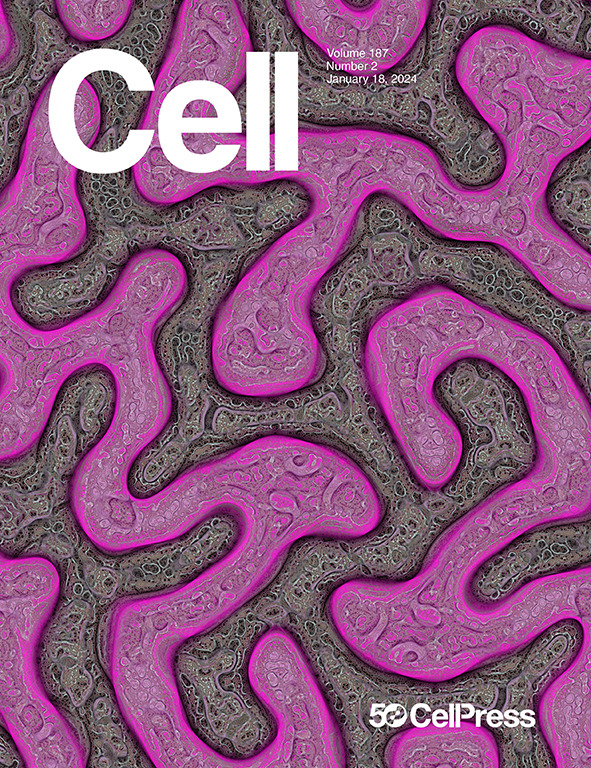核糖体焕发生机
IF 45.5
1区 生物学
Q1 BIOCHEMISTRY & MOLECULAR BIOLOGY
引用次数: 0
摘要
核糖体及其 tRNA 底物将 mRNA 所携带的遗传信息转化为蛋白质,从而将基因型与表型联系起来。在过去的半个世纪里,核糖体的结构和作用机理已经从神秘和混乱中走了出来。现在我们可以清楚地看到,核糖体是一种古老的以 RNA 为基础的分子机器,其结构的复杂程度令人吃惊,而且它在所有生物体中都基本相似。蛋白质合成的三大核心功能--解码、肽键形成催化以及 mRNA 和 tRNA 的转运--都是基于优雅的机制,这些机制是从生命的基础大分子 RNA 的特性中演化而来的。此外,所有这三种功能(甚至生命本身)似乎都是在熵的作用下进行的。因此,蛋白质合成似乎利用了 GTP 水解和肽键形成的能量来限制核糖体上发生的事件的方向性和准确性。本文章由计算机程序翻译,如有差异,请以英文原文为准。
The ribosome comes to life
The ribosome, together with its tRNA substrates, links genotype to phenotype by translating the genetic information carried by mRNA into protein. During the past half-century, the structure and mechanisms of action of the ribosome have emerged from mystery and confusion. It is now evident that the ribosome is an ancient RNA-based molecular machine of staggering structural complexity and that it is fundamentally similar in all living organisms. The three central functions of protein synthesis—decoding, catalysis of peptide bond formation, and translocation of mRNA and tRNA—are based on elegant mechanisms that evolved from the properties of RNA, the founding macromolecule of life. Moreover, all three of these functions (and even life itself) seem to proceed in defiance of entropy. Protein synthesis thus appears to exploit both the energy of GTP hydrolysis and peptide bond formation to constrain the directionality and accuracy of events taking place on the ribosome.
求助全文
通过发布文献求助,成功后即可免费获取论文全文。
去求助
来源期刊

Cell
生物-生化与分子生物学
CiteScore
110.00
自引率
0.80%
发文量
396
审稿时长
2 months
期刊介绍:
Cells is an international, peer-reviewed, open access journal that focuses on cell biology, molecular biology, and biophysics. It is affiliated with several societies, including the Spanish Society for Biochemistry and Molecular Biology (SEBBM), Nordic Autophagy Society (NAS), Spanish Society of Hematology and Hemotherapy (SEHH), and Society for Regenerative Medicine (Russian Federation) (RPO).
The journal publishes research findings of significant importance in various areas of experimental biology, such as cell biology, molecular biology, neuroscience, immunology, virology, microbiology, cancer, human genetics, systems biology, signaling, and disease mechanisms and therapeutics. The primary criterion for considering papers is whether the results contribute to significant conceptual advances or raise thought-provoking questions and hypotheses related to interesting and important biological inquiries.
In addition to primary research articles presented in four formats, Cells also features review and opinion articles in its "leading edge" section, discussing recent research advancements and topics of interest to its wide readership.
 求助内容:
求助内容: 应助结果提醒方式:
应助结果提醒方式:


